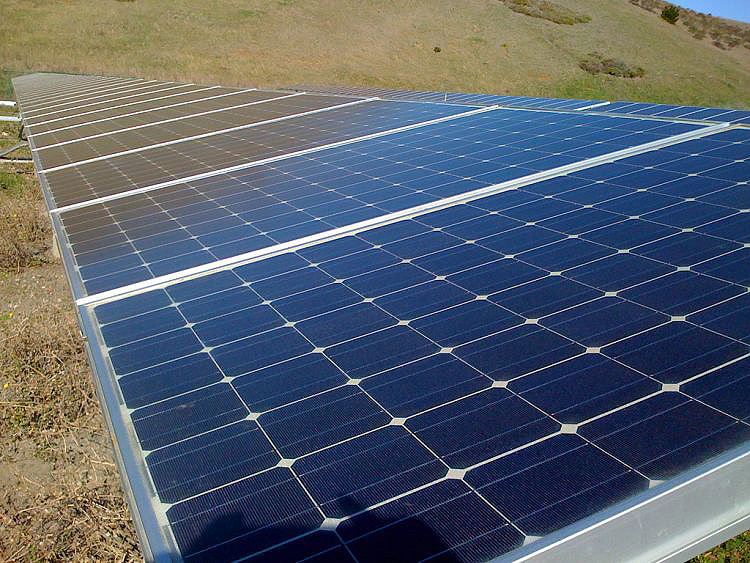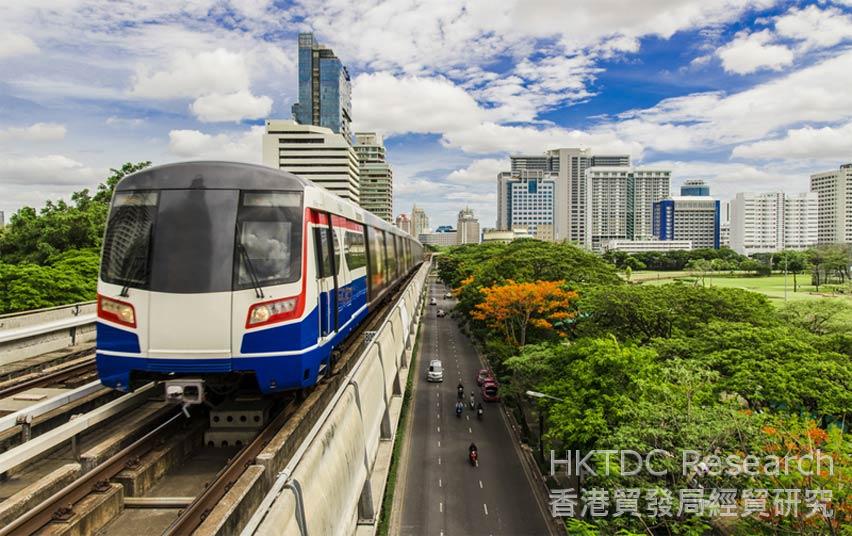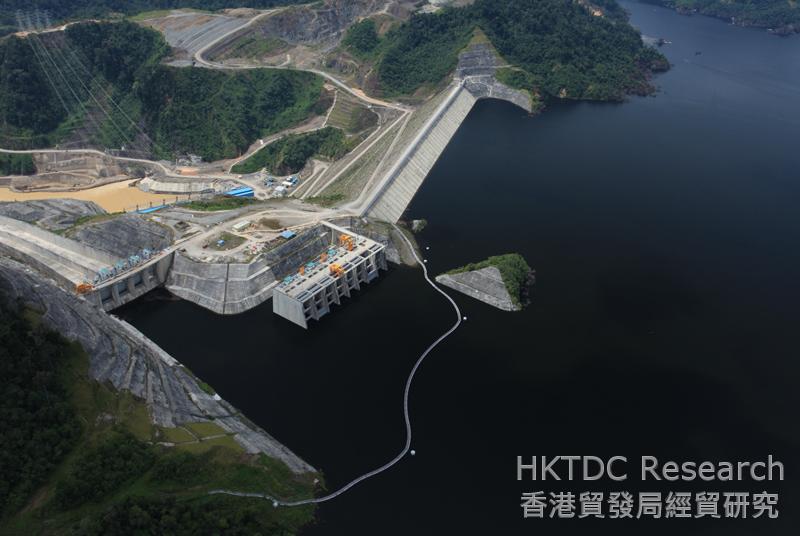Chinese Mainland
With the Lower Sesan Two Dam just the latest Cambodian beneficiary of BRI funding, further collaborations await.

As the waters of the Lower Sesan Two Dam began to rise last month, it marked the completion of just one of the many Belt and Road Initiative (BRI) projects currently underway in Cambodia. While China and Cambodia have a long history of co-operation, the BRI – the mainland's ambitious infrastructure development and trade facilitation programme – has taken this to new heights, particularly with regard to power generation.
Sesan Two is just the latest in a series of hydropower projects, largely built in collaboration with China, that have transformed Cambodia's energy landscape. The country has long suffered from a severe electricity shortage and, with its power generation largely fueled by diesel oil, its per watt prices have been among the world's highest. With its booming manufacturing economy sending demand growing by 18% a year, a large-scale hydropower development plan was seen as a priority as far back as 2003.
Even in those pre BRI-days, China recognised the strategic importance of nurturing the economic development of its near-neighbour. As a consequence, mainland businesses have long-bankrolled the development of Cambodia's hydropower sector.
In 2006, Sinohydro invested about US$280 million in such projects, while Sinomach and China Gezhouba jointly provided funding of around $540 million in 2008, with Huadian Power adding in another $580 million in the same year. More recently, China Huaneng, via its HydroLancang subsidiary, injected $410 million into the Sesan Two project. The outstanding costs of this $977 million project were then jointly met by Vietnam's EVN International and the Royal Group, one of Cambodia's largest investment-oriented conglomerates.
At present, seven of the hydropower facilities already online feed into the country's national grid, with a further two installations servicing more local power requirements. By the end of the year, when it is fully-operational, Sesan Two will have an annual capacity of 400MW, making it the country's largest single hydropower source.
As a result of the programme, electricity generation has soared across the country, sending prices tumbling. In 2014, when the hydro plants of Stung Tatai (246MW) and Lower Stung Russei Chrum (338MW) plants came online, the country's total level of hydropower-sourced energy soared by 82%, rising from 1,015.54 million kWh in 2013 to 1,851.60 million kWh. Despite such massive steps forward, the hydropower programme is still seen as in its infancy, with many more installations planned.
Despite the clear benefits to the country in terms of more affordable and more readily-accessible power, the hydropower programme has not been without its critics. Indeed, the Mekong River Commission (MRC), a regional advisory body, has warned that any further expansion of the sector could actually impair Cambodia's economic development.
More specifically, the MRC sees further hydropower developments as likely to result in a 70% drop in lake and floodplain fisheries production across the Mekong basin areas. This, it says, could see Cambodia's GDP drop by between $3 billion and $5 billion for the period 2020-2040.
On top of such dire prognostications, others have maintained that the economic argument in favour of further hydropower development may actually be fundamentally flawed. In particular, the steady decline in solar power costs – a technology that has a far lower environmental impact – is seen as making it an increasingly viable alternative.
Perhaps sensing a likely change in national and international sentiment on this front, last December saw China's Hengtong Optic sign a $200 million BRI-related deal with the Inner Renewable Energy (Cambodia) Company. This will see the businesses jointly develop two solar-powered 100-MW generating plants.
Geoff de Freitas, Special Correspondent, Phnom Penh
Editor's picks
Trending articles
The Hong Kong University of Science and Technology is playing a key research role for Belt and Road Initiative opportunities, says HKUST’s Albert Park. Co-presenting a series of market insight seminars, Professor Park says the HKUST’s Business School has a major collaboration with overseas academics while as founding member of the Asian Universities Alliance it is promoting two-way partnerships with Belt and Road countries and opportunities in Hong Kong.
Speaker:
Albert Park, Director, HKUST Institute for Emerging Market Studies
Related Links:
Hong Kong Trade Development Council
http://www.hktdc.com
HKTDC Belt and Road Portal
http://beltandroad.hktdc.com/en/



By James Laurenceson, Deputy Director of the Australia-China Relations Institute, University of Technology Sydney
Simone van Nieuwenhuizen, Project and Research Support Officer, Australia-China Relations Institute, University of Technology Sydney
Elena Collinson, Senior Project and Research Officer at the Australia-China Relations Institute, University of Technology Sydney
Executive Summary
The Belt and Road Initiative (BRI) was launched as a signature initiative of Chinese President Xi Jinping in 2013. China contends that the aim of the BRI is to enhance regional connectivity across five dimensions – infrastructure, policy, finance, trade and people-to-people links. The BRI was written into the charter of the Chinese Communist Party at the 19th Party Congress in Beijing in October 2017, indicating that it will remain a focal point for China’s foreign policy and its international economic outreach beyond the end of Xi’s second term in 2022. The Australian government has yet to formulate a policy on BRI engagement. To date the response has been limited to the signing of a Memorandum of Understanding (MOU) with China on cooperation with Australian companies on BRI projects in third-party countries. Australia and China are also reportedly currently considering forming a working group to further explore other types of cooperation on the BRI, although the formation of the group is still in the planning stage. This paper critically reviews the four major points of debate on deepening Australian engagement with the BRI.
1. The geostrategic outcomes of the BRI
The first is that Australia should keep its distance because the BRI has the potential to promote a geostrategic outcome unfavourable to its security ally, the United States. The major driver of geostrategic shifts in the Asia-Pacific region is China’s steadily increasing economic power. Short of the US and its allies, partners and friends adopting an active China containment strategy, this trend is likely to continue, irrespective of the BRI, although the BRI may accelerate it. There is a possibility that the US will lean on Australia to sign up to alternatives to the BRI. Should Australia opt to deepen engagement with the BRI, it could – and should – also participate in other initiatives that have a clear economic justification.
2. The BRI in China’s policymaking tradition
Another reported Australian government concern is that the BRI lacks a detailed roadmap outlining a pipeline of projects and this prevents meaningful participation in practice. However, in a Chinese policy-making tradition, at this stage the BRI is chiefly a concept, an invitation to cooperate, and has flexibility deliberately built in. This flexibility provides opportunities for creative Australian diplomacy to advance the national interest. Australian companies participating in BRI projects in third-party countries is only one way that cooperation might proceed. Australia could also use the BRI to pursue greater connectivity with China’s rapidly growing economy in areas not covered by the China-Australia Free Trade Agreement (ChAFTA), subject to national interest and national security considerations. For example, Australia could seek to harness the political capital that China is staking on the BRI to upgrade the three decade-old investment treaty that exists between two countries.
3. The BRI’s transparency and governance standards
China’s mixed track record on transparency, governance and local participation on overseas investments is another reason sometimes provided for why the Australian government should not more actively engage with the BRI. Australia has a clear national interest in supporting initiatives that result in strong development outcomes, pushing for adherence to principles of transparency and the implementation of a strong governance framework. At the same time, as the BRI’s main sponsor, China has financial and reputational incentives to promote the BRI’s effectiveness and long-term likelihood of success. The BRI will go ahead with or without Australia. More active Australian engagement with the BRI might assist in achieving better governance and development outcomes. For example, the financial resources China is willing to commit to the BRI could be used to leverage Australian funds and project evaluation expertise in a boost for regional aid and development. And Chinese investments in Australia, whether badged as part of the BRI or not, will still need to go through Australia’s rigorous foreign investment approvals regime. The Australian Treasurer retains the prerogative to reject bids they deem contrary to the national interest. The BRI does not bind Australia to China to the exclusion of an open, competitive bidding process for greenfield or brownfield investments. It may, however, act to increase Chinese interest and the value of Australian assets, and in some cases, Chinese companies may emerge as the only bidders.
4. The question of how the BRI benefits Australia
Limited economic benefits have also been cited as justification for hesitation on Australia’s part. Australia already has extensive trade and investment ties with China and as a high-income country with a solid credit rating attracting funding at competitive interest rates is, in a general sense, not difficult. Exactly how much new money China is putting on the table for the BRI is also not clear. Yet the fact that trade with China was already booming did not stop the Australian government from actively pursuing initiatives such as ChAFTA. And some Australian regions do struggle to attract the investment needed to support local jobs, as the government’s own Northern Development Strategy makes plain. There is also a regional dimension to Australia’s national interest with many emerging economies in the Asia-Pacific unable to secure the financing needed for infrastructure upgrading. For its part, Australia’s business sector has encouraged the government to take a more proactive stance on BRI engagement.
Please click to read the full report.
Editor's picks
Trending articles
By Kimkong Heng, Assistant Dean of School of Graduate Studies, University of Cambodia
Sovinda PO, master’s degree student in International Relations at the School of Advanced International and Area Studies, East China Normal University, Shanghai, China
The BRI and the Way Forward for Cambodia
To reap maximum benefits from this highly ambitious infrastructure development and investment initiative, Cambodia needs to work to expedite its reform processes and ensure its political stability. First and foremost, Cambodia must make sure its 2018 national election will not scare investors too much. Reports have shown a noticeable drop in real estate investment over the first quarter of 2017 prior to the Cambodian commune election in June this year and the much-anticipated and much-feared national election in July next year (May, 2017b). Should something go wrong, say, a civil war as frequently warned by Prime Minister Hun Sen, Cambodia will be at a disadvantage and lose out on what the Chinese Belt and Road Initiative has to offer, not to mention other investment prospects.
Second, Cambodia has to continue to fully address many burning social issues ranging from corruption to nepotism and impunity to social injustice. Although China’s aid and loans have often arrived in Cambodia in a nostrings-attached fashion and this practice is most unlikely to cease anytime soon, it is imperative that the Cambodian government be willing to tackle the issues head-on if it wishes to see and enjoy real economic prosperity throughout the country. With corruption and other contentious issues still looming large, perhaps it could be that Cambodia will seriously lag behind its neighboring countries in terms of economic growth, public engagement and trust, social solidarity, and national reputation on the global stage. In this respect, the exciting prospects of China’s OBOR initiative would be challenged, if not diminished.
Third, Cambodia would stand to lose if it does not begin to aggressively and heavily invest in building its human capital. Having been the unfortunate victim of genocide for nearly four years from 1975 to 1979, followed by the Vietnamese occupation and protracted civil war, this war-torn country has begun its national restoration process from scratch as almost all of its intellectuals were liquidated or forced to flee the country. Although remarkable improvement has been made to its human resources over the past decades, Cambodia is still facing serious challenges regarding its skilled labor force. The lack of skilled labor could translate into employing foreign 12 professionals or technicians for high-paying jobs, while many Cambodian workers perform the unskilled ones. Thus, Cambodia would not be able to derive benefits as substantial as it should from China's project of the century.
Fourth and importantly, Cambodia has to seek to diversify its foreign policy to avoid falling completely within the Chinese sphere of influence. Jumping on the Chinese bandwagon at the expense of its relations with its Southeast Asian neighbors and the US as well as the US allies would definitely not be the best option for Cambodia, although China is Cambodia’s largest foreign investor and its most generous economic and military supporter. An option for Cambodia to ensure its prosperity, sovereignty, and foreign policy autonomy could be to enhance its relations with all the countries in the region and beyond. If Cambodia does not adopt an omnidirectional foreign policy – making as many friends as possible – this small state would risk losing its independent foreign policy to China and become a true Chinese patron. Thus, it is vitally important for Cambodia to restrain itself from alienating others while relying solely on China’s unconditional aid and loans. This Chinese inclination may seem effective in the short term, but it would not be beneficial for the country in the long run.
Finally, in addition to ensuring political stability, tackling critical social issues, building up human resources, and forging flexible self-reliant foreign policy, Cambodia has to take its relationship with its ASEAN counterparts seriously and do whatever it possibly can to enhance ASEAN unity and centrality. As a member of ASEAN, Cambodia has garnered great economic and geopolitical benefits from this regional organization. Cambodia’s value and leverage ability are enhanced, Mahbubani and Sng argue, with its current ASEAN membership, without which this small state would be less capable, if not incapable, of taking advantage of its geopolitics and ASEAN privilege. In this regard, Cambodia not only needs to settle its domestic affairs but also improve its foreign policy by fostering good relations with its neighboring countries and strengthening its role and relevance in ASEAN.
Conclusion
It is undeniably true that Cambodia-China relations have gone a long way, dating back more than two thousand years, and therefore both countries have regarded each other as “close friends,” at least from the Cambodian side.
The fact that Cambodia chooses to bandwagon with China should be seen as a common form of Cambodia’s diplomatic behavior. As a small state in its developing stage, Cambodia is in desperate need of support and investment from all corners of the world. Embracing the BRI is apparently and rightly what Cambodia should do as the project aligns with the kingdom’s national development strategy, in particular, the Rectangular Strategy and the Industrial Development Strategy 2015-2025. In this regard, the BRI is a grand development plan Cambodia can take advantage of to realize its national aspirations to become a middle-income and high-income country in the next few decades.
However, Cambodia’s total acceptance of China’s Belt and Road Initiative can be a mixed blessing, considering a strong likelihood that Cambodia may fall into the Chinese debt trap and China’s sphere of influence. In addition, Chinese investments and development assistance, outside or inside the BRI framework, which very often target the few Cambodian elites, not the general public, may facilitate corruption and nepotism, further the exploitation of natural resources, and worsen human rights records in Cambodia. More importantly, as Cambodia enthusiastically supports China’s BRI and continue to receive China’s “no string attached” aid and loans, its foreign policy will be undermined and formulated in favor of China’s broader interests and influence in the regional and international arena.
Recognizing these challenges, this paper recommends that Cambodia actively engage in its many reform agendas, including legal, educational and health reforms, preserve and enhance political unity and stability, strive to resolve key domestic issues, strengthen human resources, and pursue independent foreign policy. To move forward and remain relevant in the Southeast Asian region, the wider Asia-Pacific region, and the global community, Cambodia needs to enhance its relations with countries in ASEAN and work hard to foster ASEAN unity and centrality, while also adopting a pragmatic open-door foreign policy – making as many friends as it possibly can.
Please click to read the full report.
Editor's picks
Trending articles
By The Association of Southeast Asian Nations (ASEAN)
FDI flows into ASEAN in 2016 remained high despite a decline to USD 97 billion, which reflects the general downfall trend of global FDI flows into the developing economies.
FDI flows from most ASEAN Dialogue Partners and intra-ASEAN investment actually increased, with the latter reaching an all-time high and accounting for a 25 per cent share of FDI flows into the region.
However, these increases were not enough to help overcome the decline which was due to divestment, acquisition of foreign assets by ASEAN companies in their home countries and repayment of intracompany loans by affiliates within the region.
Many foreign companies have a long historical association with the region, some dating as far back as the 1800s and they continue to invest and expand in the region.
This year’s Report examines the historical investment development of two Dialogue Partners of ASEAN, namely the European Union (EU) and India. Major multinational enterprises (MNEs) from these countries have been present in ASEAN in a wide range of industries. Many of them operate in multiple locations across the region in different segments of the value chains.
This year’s Report also features the development of economic zones in ASEAN. This is a welcome follow-up to the “ASEAN Guidelines for Special Economic Zones Development and Collaboration” adopted by ASEAN Economic Ministers (AEM) in 2016. ASEAN has at least 1,600 economic zones of various types.
These zones, ranging from free trade zones, export processing zones, IT parks to mega special economic zones, have played a significant role in the socioeconomic development in the region and in attracting FDI. Given the rapid economic growth and demand, ASEAN Member States continue to develop more economic zones to boost FDI.
Policy makers, entrepreneurs, and other stakeholders may find this Report useful in understanding economic zones in ASEAN, as well as the business and investment development in the region in general.
Please click to read full report.
Editor's picks
Trending articles
Joint venture solar facilities earmarked for powering East Coast Rail Link and Southeast Asia port expansions.
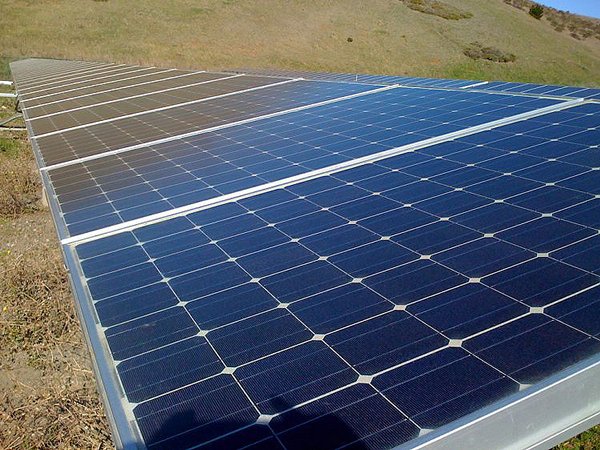
China has announced it is to back moves to build Malaysia's biggest solar-power plant. The project will see a 61MW solar facility established at a 110-hectare site in Kuantan, the capital of Pahang, Malaysia's third-largest province. From Malaysia's point of view, the installation marks one more step on its road to establishing a clean-energy network, while China sees the facility as vital for powering the further Southeast Asian expansion of the Belt and Road Initiative (BRI), the country's ambitious infrastructure development and trade facilitation programme.
Under the terms of an agreement reached at the end of last year, the Nanjing-based ET Solar and Northwest Electric Power Design Institute (NWEPDI), a division of the China Power Engineering Consulting Group, will work with UiTM Solar Power, a Selangor-headquartered solar photovoltaic developer, to build and operate the new facility. When completed, it will be the largest of the 42 new solar installations scheduled to be built at sites across Peninsular Malaysia, Sabah and Labuan in the run-up to 2020. Malaysia's Energy Commission hopes to bring 360MW of new solar power capacity on-stream over the next three years.
The Kuantan facility is expected to generate enough clean energy to power 80,000 households when connected to the national grid in November this year. ET Solar's second major Malaysian project, it comes in the wake of the company's work on a number of large-scale installations across the world, including sites in the UK, the US, Germany, Japan, South Africa, Chile and Turkey.
Its first project in the country was commissioned in April last year and saw the company establish a 12MW solar-power plant in the northern Kedah state. The facility came online at the end of last year and currently generates enough energy to power more than 5,000 households.
Apart from Chinese companies, South Korean businesses have also lent their expertise to help meet Malaysia's clean-energy aspirations. In December last year, the Seoul-headquartered Hanwha Energy Group announced it had been appointed to install and manage a 48MW solar-power facility in the northwestern Perlis state. With construction work scheduled to begin next year, it is expected to power 15,000 households when it comes online in October 2020.
Taken together, the Kuantan, Kedah and Perlis solar plants form part of an evolving clean-energy network designed to generate electricity for commercial and household use. A proportion of their output has also been earmarked for powering a number of BRI-related infrastructure projects, most notably the East Coast Rail Link, the expansion of Kuantan Port and the completion of work on the Pan-Borneo Highway.
The facilities are also key elements in the Malaysian Solar PV Roadmap 2030, which is likely to be unveiled later this year. The work of the Malaysian Investment Development Authority, the Roadmap is expected to act as the blueprint for delivering the country's integrated solar-energy ambitions.
Prior to the official unveiling of the Roadmap, a number of the expected proposals have already been enacted. In October last year, for instance, work began on stepping up the manufacture of solar photovoltaic cells, with the country aiming to be the world's second-largest manufacturer, after China, of such units – vital links in the solar-power generation chain.
Over the medium-term, more opportunities are expected to emerge for BRI investors as Malaysia continues to prioritise the expansion of its sustainable-energy sector in a bid to cut greenhouse emissions, reduce the nation's reliance on its oil and gas reserves and improve energy efficiency, while also bringing down the overall cost of power generation. The country is aiming to produce 2,080MW of energy from renewable sources by 2020, with solar power accounting for more than half of that total.
Geoff de Freitas, Special Correspondent, Kuala Lumpur
Editor's picks
Trending articles
Speech by Mahmoud Mohieldin, Senior Vice President of the World Bank Group
Good morning. I am very happy to represent the World Bank Group at this opening ceremony to discuss an initiative which has the potential to impact billions of people. Before I give my remarks, I want to acknowledge Mr. LI Yong, Director General of UNIDO, Mr. Heinz Fischer, former President of the Republic of Austria, Mr. WANG Xiaotao, Vice Chairman of the National Development and Reform Commission of China, Ms. Debora Serracchiani, President of Region Friuli Venezia Giulia in Italy, and Mr. WU Zhong, Director General of the Finance Center for South South Cooperation (FCSSC) and congratulate UNIDO and the FCSSC for organizing and supporting this important event.
This place, the UNIDO headquarters, reminds me of the pyramid builders. You know pyramids as massive constructions which last forever. And one of those contemporary builders was a fellow Egyptian Ibrahim Helmi Abd-elRahman, who was the first and founder Executive Director of UNIDO. He is known back home as a scientist specialized in building institutions, globally like UNIDO, nationally, like the Institute of National Planning, and he spent the rest of his life until he passed away 20 years ago building institutions for development in his home village, which is also mine. What he did is very relevant to today’s topic on how to link global initiatives to national policies, with local impact.
The Belt and Road Initiative has the potential to be global in its reach, but local in its impact. It will reach 65 countries -- potentially affecting 4.4 billion people and leveraging 40 percent of the world's GDP. Huge investments will be channeled toward infrastructure projects across Asia, Africa, and Europe. Six new land corridors will be rehabilitated, and maritime connectivity will be improved. And it has the potential to help countries reach their national objectives embedded in the Sustainable Development Goals, in areas such as jobs, poverty, infrastructure, and sustainable cities.
This initiative can be transformative for all cities along the new corridors, and could bring unprecedented opportunities for their economies and their population. The vision behind these investments supports an economic agenda to promote trade across domestic and international borders, thereby seeking to enhance prosperity among local populations.
It is important that the projects embedded in the initiative promote economic growth in a way which ensures a fair distribution of benefits within and across cities. To be consistent with the Sustainable Development Goals, they should also promote social inclusion, adequate financing, environmental sustainability and inclusive economic growth.
Lower costs and travel time increases the mobility of firms and workers, but this also increases the competition between cities for jobs and talent. We know that big transformative infrastructure projects might be associated with concentration of resources in a few places, and the newly created benefits might be unequally redistributed within and between cities.
How can we maximize welfare impacts and avoid adverse consequences? For cities along these corridors, transport infrastructure is a necessary but not wholly sufficient condition for development.
Complementary policies and investments -- in addition to transport infrastructure – will be critical if we are to leverage more fully these large corridor investments. This includes better spatial and land use planning, improved policy and regulatory investment frameworks, a healthy business climate, and strengthened trade facilitation and logistics capabilities.
Ensuring that the new infrastructure is low-carbon and climate-resilient is equally important. When implementing such ambitious transport projects, it is important to include improved environmental regulation, pollution reduction measures, and incentives for the adoption of new green technologies and higher environmental standards.
Science, Technology, and Innovation – key multipliers for reaching the SDGs – are critical to position cities with the technology of tomorrow, not just the legacy technologies of today. Access to data will be essential to the development of new technologies and their application to key industries.
Uncertainties on the financing schemes of such major investment projects raise concerns regarding the implementation and the equitable distribution of the financial burden across locations. Varied modalities of co-financing should be considered to ensure that there is sustainable infrastructure financing across domestic institutions and across countries, based on shared interest. New financing vehicles that can more efficiently bring together public and private resources should also be explored.
The World Bank Group is already deeply engaged in countries along the BRI corridor, based on our joint country partnership frameworks. The World Bank has commitments of about $80 billion dollars for infrastructure in Belt and Road countries, with numerous additional projects addressing infrastructure, trade, and connectivity in its project pipeline. Furthermore, the World Bank Group helps countries to address trade and connectivity issues by providing advisory services and analytics. IFC, our private sector arm, is engaged in numerous BRI countries supporting private sector engagement, and MIGA, the World Bank Group’s risk insurance arm, provides guarantees for outward foreign direct investment.
These opportunities and challenges for this ambitious project are immense, and we can indeed maximize its benefits if the partners – including host countries, the private sector, CSOs, international organizations, and many others – all work together closely. The World Bank Group is delighted to work with UNIDO and all the partners of the Belt and Road Initiative to maximize these investments for people and the planet.
Speech by Mahmoud Mohieldin, Senior Vice President of the World Bank Group. 2017. Belt and Road Initiative: A global effort for local impact. Connecting cities for inclusive and sustainable development. © World Bank. http://www.worldbank.org/en/news/feature/2017/09/26/bridge-for-cities-speech-by-mahmoud-mohieldin License: Creative Commons Attribution license (CC BY 3.0 IGO)
Editor's picks
Trending articles

In tandem with China’s increasing economic activity abroad, mainland enterprises are devoting greater efforts to developing their business worldwide. As well as expanding into international markets through trade and strengthening offshore sourcing to support production at home, many are also making outward direct investment (ODI) in developed economies in Europe and America. Some are seeking investment opportunities in Asian and African countries under the Belt and Road Initiative, in the hope of tapping the potential of these markets or utilising local resources to enhance their production capacity.
But investors are reminded that the support services required in making outward investment and conducting offshore trade are not exactly the same. Investors must acquire an in-depth understanding of the business environment of their investment destinations in order to ensure that their investment projects can be implemented smoothly. The rudimentary legal systems in some Belt and Road countries can create extra risks for investment. Hong Kong’s legal professionals, with their familiarity with overseas legal environments and business cultures, and their access to global resources through their extensive networks, are in an excellent position to provide due diligence services for mainland investors and help them control risks.
Private Enterprises Become Major ODI Players
Nowadays, a large number of private enterprises in China with financial clout are aggressively tapping into international markets and accelerating their offshore investment, in order to make better use of overseas resources and promote the sustainable development of their business. As a result, private enterprises are gradually replacing state-owned enterprises (SOEs) as China’s major ODI players. According to Ministry of Commerce figures, investment from non-SOEs (including private enterprises and joint-stock companies) rose from 19% of China’s non-financial ODI at the end of 2006 to 45.7% at the end of 2016. In 2016 alone, almost 70% of non-financial ODI came from these non-public sector investors[1]. In spite of this, there are still many mainland enterprises which find themselves lacking information on offshore investment, unfamiliar with the business environment in Belt and Road countries, and in dire need of professional services to help them expand their business abroad.

In an interview[2], Wang Xiaogang, Partner of King & Wood Mallesons, said: “China’s foreign trade is booming, and many mainland enterprises have been conducting international trade through Shanghai and Hong Kong. They use Hong Kong as a platform to handle business payments and receipts in foreign currencies, and take advantage of the innovative financial policy piloted in the Shanghai Free Trade Zone to move funds in foreign currencies or renminbi in a bid to raise financial and operational efficiency. They have thus become very skillful in trade operations. However, as enterprises make further ODI, relying on trade experience alone can no longer meet their business needs. In addition to considering issues such as business prospects and project financing of the investment concerned, they must also take note of the laws and regulations, tax policy and business environment of their investment destinations. Yet many investors are faced with the problems of insufficient information, language and cultural barriers, as well as a lack of understanding of the business practices of foreign countries, which have directly increased their risks of making offshore investment.”
He added: “Before going ahead with their investment, enterprises should assess different aspects of the project concerned. For instance, if they intend to set up production plants, transit warehouses or distribution facilities overseas, they must gain a good understanding of the business environment, labour policy and environmental requirements in the investment destination before they can identify risks and devise the necessary measures to ensure the smooth implementation of the investment project. Even in a case as simple as establishing a company in Hong Kong, they must first learn about Hong Kong’s immigration policy in order to make arrangements for management staff to come to Hong Kong. They must also have a clear understanding of Hong Kong’s tax policy so as to meet the necessary legal requirements and enjoy the relevant benefits. For example, in the Policy Address delivered by the Chief Executive of the Hong Kong SAR in October 2017, it was announced that the profits tax rate for the first HK$2 million of profits made by Hong Kong companies would be reduced from the current 16.5% to 8.25%, and that eligible R&D expenditure is entitled to 200-300% tax deduction[3]. Moreover, mainland enterprises can use the Hong Kong service platform to carry out tax planning for their international business and avoid unnecessary tax burdens.”
Professional Services Can Help Reduce M&A Risks
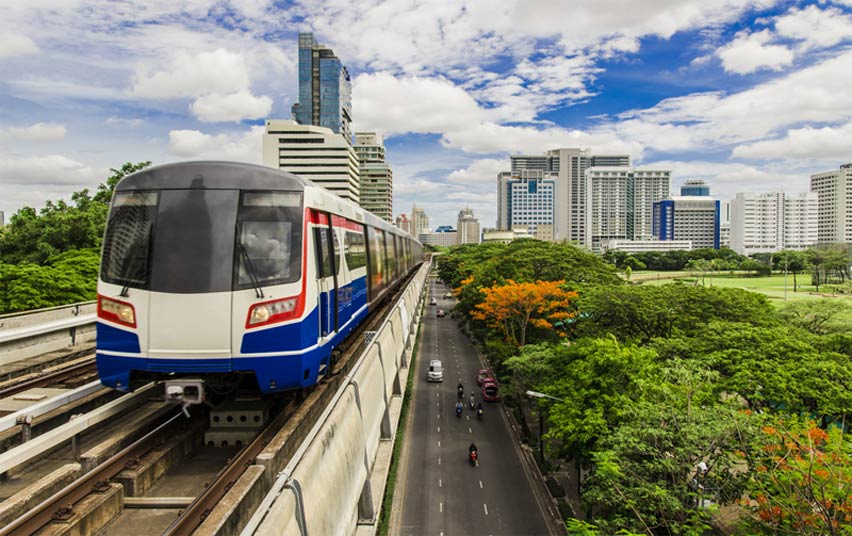
Mainland enterprises have also been very active in conducting merger and acquisition (M&A) overseas in recent years. Official statistics on foreign investment show that, in 2016, ODI in M&A by Chinese enterprises involved a total of 765 projects in 74 countries and regions. The amount of ODI in M&A projects reached US$86.5 billion, accounting for 44.1% of China’s total ODI in that year. At the same time, project financing funds worth US$48.8 billion were raised overseas, accounting for 36.1% of the M&A amount involved. These foreign M&A projects mainly covered manufacturing, information transmission, software and information technology services, transportation, warehousing and postal services, and power, heat, gas and water generation and supply[4].
Wang said: “The complexity of conducting M&A overseas is no less than that of making general direct investment. Apart from the above-mentioned risk management measures, investors must also have an in-depth understanding of actual conditions such as the equity, financial profile and assets of the M&A project. Investing in Belt and Road countries, especially in less popular destinations, can incur higher transaction risks since some countries may not have a sound legal system and their business practices may not align with international practices. Mainland investors are in great need of professional services to handle these problems. Hong Kong’s legal practitioners have extensive international networks and benefit from Hong Kong’s free flow of information. They can effectively lead professional teams from all over the world to carry out due diligence investigations for mainland enterprises’ investment projects, identifying and assessing problems in order to control investment risks.”
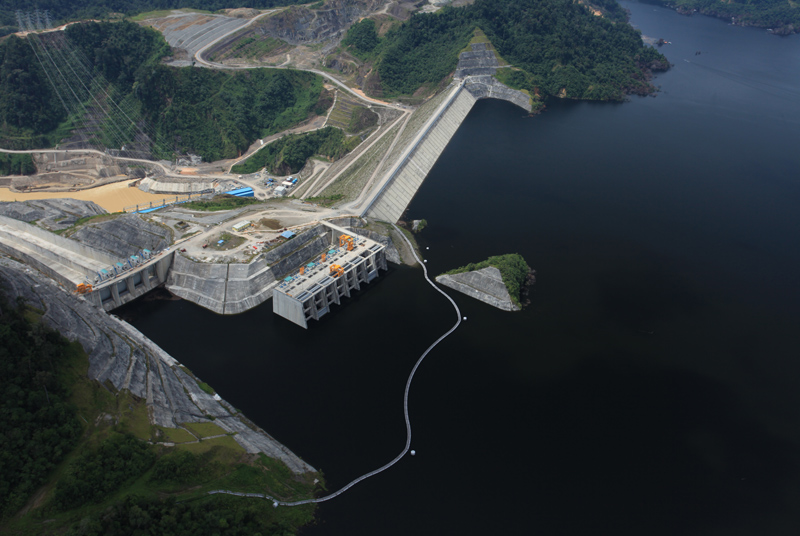
Asia-based King & Wood Mallesons is regarded as one of the most innovative law firms in the world. Currently, the firm has a team of over 2,000 legal professionals in 27 cities around the globe. It has set up offices in 11 mainland cities as well as in Hong Kong to help clients understand the business and investment environment in various countries and regions, and offer them the right solutions. King & Wood Mallesons’ Hong Kong office provides a comprehensive range of legal services to multinational corporations, investment banks, mainland enterprises and local clients. Using its lawyers’ professional knowledge and rich experience in the Asian market, King & Wood Mallesons also provides clients with professional services on cross-border transactions.
Note: For details of the company interviews conducted jointly by HKTDC Research and the Shanghai Municipal Commission of Commerce, please refer to other articles in the research series on Shanghai-Hong Kong Co-operation in Capturing Belt and Road Opportunities.
[1] Source: Statistical Bulletin of China's Outward Foreign Direct Investment 2016
[2] Representatives of HKTDC Research and Shanghai Municipal Commission of Commerce jointly conducted an interview with King & Wood Mallesons (Hong Kong office) in the fourth quarter of 2017.
[3] For details, please refer to The Chief Executive’s 2017 Policy Address, The Hong Kong SAR of the People’s Republic of China.
[4] Source: Statistical Bulletin of China's Outward Foreign Direct Investment 2016
Editor's picks
Trending articles
Budapest airport signs deal with leading mainland logistics business, with e-commerce tipped to be primary beneficiary.

As the Belt and Road Initiative (BRI) continues to roll out across Central and Eastern Europe (CEE), Budapest is looking to become one of the programme's key air-cargo distribution points. In order to deliver on this, late last year, Liszt Ferenc International Airport – the Hungarian capital's primary air-passenger and freight terminal – struck a new deal with STO Express, one of the mainland's largest logistics companies, which is expected to see the volume of China-origin freight channelled via Budapest soar.
The deal was finalised during last November's China-CEE Summit in Budapest and has seen the Hungarian airport designated as STO's official air-cargo hub for the wider region. As a consequence, the level of air-cargo throughput at the Liszt Ferenc facility is expected to grow substantially over the coming months, with a rise in the level of cross-border e-commerce items expected to be one of the major contributory factors. In order to fully facilitate this dramatic and rapid upturn in volume, EKOL, an Istanbul-headquartered logistics-services provider, is also party to the co-operation agreement with STO.
Commenting on the significance of the deal, Rene Droese, Liszt Ferenc's Director of Property and Cargo Services, said: "Export-import between China and Hungary, as well as the wider CEE region, plays a hugely important role in our rapidly developing market. With this agreement now in place, I believe that Budapest and its airport will provide the best solution for STO's distribution requirements in the immediate region and across Europe."
Immediately prior to the formal agreement, STO began running its first service via the Hungarian airport, with a cargo-load of e-commerce deliveries touching down in Budapest on 3 November. With the arrangement between the airport operator – Budapest Airport Ltd – and STO now formalised, the logistics company will run regular scheduled cargo flights between Hungary and a number of mainland cities. The service is expected to be widely used by many of STO's existing partner businesses, most notably Alibaba, the Hangzhou-headquartered e-commerce giant.
The deal with STO caps an already successful year for Liszt Ferenc, which saw its cargo throughput for January-October 2017 increase by 14.5% compared with the same period in 2016, taking its total cargo volume for the first 10 months of last year to 103,700 tonnes. Overall, the airport is said to have enjoyed 36% growth in cargo traffic since December 2015, a considerable achievement given the high levels of competition and the parlous state of its neighbouring economies.
At present, the airport is midway through its own extensive upgrade and expansion plan. Last year it completed a major refurbishment of its primary terminal, while also opening phase one of its dedicated business zone.
Meanwhile, work is still on-going on the construction of Cargo City, the airport's new and expanded cargo-handling facility. Scheduled for completion in 2019, it will have an annual handling capacity of 150,000 tonnes and provide a range of centralised cargo services, including facilities for handling companies and forwarders, customs processing points and certified storage for special cargoes, as well as a temperature-controlled zone.
In terms of the BRI, China's ambitious infrastructure development and trade facilitation programme, the CEE region is seen as of particular significance. As well as prioritising trade with a number of the rapidly emerging CEE economies – most notably Poland, the Czech Republic, Slovakia and Hungary – the region is also seen as a vital conduit between China and the mega-markets of Western Europe.
Beata Balazs, Budapest Consultant
Editor's picks
Trending articles
By LehmanBrown International Accountants
Opportunities the Belt and Road Initiative can offer Foreign Investors
By building greater connectivity and developing nations, once completed, the initiative will make it easier for large multinationals and start-ups alike to reach new large consumer markets. It has been estimated that the growing middle class in Asia could number 4 billion by 2021 and following on from this (according to HSBC) 66% of the world’s population could be living in Asia by 2030. This will mean a continuously growing buyers’ market in Asia demanding luxury goods and services. It is worth noting that the initiative will reportedly be open to all nations and not limited by geography. Thus, the benefits of easy access to a growing market will be accessible to all investors regardless of their geographic background. Consequently, through the initiative this immense market will be accessible for all.
The Belt and Road Initiative could be a good investment for private investors due to President Trump’s move to back out of the Trans-Pacific Partnership (TPP). The action means the Belt and Road Initiative is likely to gain more popularity and momentum as it is aimed at providing a vast network for international trade similar to the TPP. As the US are starting to become more introverted there is gap being left on the world’s economic stage which will likely be filled by China. This view is supported by Louis Kuijs, head of Asia Economics at Oxford Economics in Hong Kong. By investing in the initiative’s developing countries, investors are investing in creating more buying power and establishing efficient routes to fully utilise these new markets.
The Chinese government are encouraging a mixture of foreign investment and domestic investment in Belt and Road projects. Various banks and funds such as The New Development or ‘BRICS’ Bank and The Asian Infrastructure Investment Bank (AIIB) are providing loans for such projects. In 2016 AIIB committed $1.73 billion USD to nine development projects along the Belt and Road. According to the Articles of Agreement of the Bank they will “provide or facilitate financing to any member, or any agency, instrumentality or political subdivision thereof, or any entity or enterprise operating in the territory of a member, as well as to international or regional agencies or entities concerned with economic development of the Asia region”. AIIB has three main requirements for financing projects: sustainable in operation, environmentally friendly and widely accepted by public society. According to a China-Britain Business Council (CBBC) report, “immediate key sectors are infrastructure, maritime and logistics, banking and financial services, professional services and energy. Further opportunities also exist in the agriculture, fishing, food processing, light equipment manufacturing, education, tourism and consumer sectors.”
Currently there are many large corporations who are in cooperation with Chinese banks and companies in countries along the Belt and Road for example BP and CNPC who in 2015 saw the highest record of oil production in Iraq since 1990. Chinese enterprises such as Changan, China Mobile and BCEGI Construction and foreign owned enterprises such as Pinsent Masons and NVC lighting are finding many opportunities for their service and expertise along the Belt and Road in aiding the development of the initiative.
Key Investment opportunities
Banking and Financial services
Firstly, with the implementation of BRI there will be a large demand for expertise in complex financial tools, the participation of financial institutions in BRI will mean long-term access to capital and a more liquid and diverse market. Thus, companies investing in BRI will need both traditional services e.g. loans and settlements but also complex financial tools e.g. investment banking, third party agency facilities, risk control and financial management. Furthermore, BRI will push RMB to expand thus creating the need for overseas financial centres. Environmental sustainability is very important for BRI and much of it needs to come from private investors. This creates opportunities for financial intermediaries to support financial institutions and governments in identifying, monitoring, supervising and evaluating green projects as information disclosure and risk control become more in demand.
Many banks such as the Bank of China (BOC) and China Construction Bank are issuing billions of dollars’ worth in BRI bonds. The bond market e.g. Panda and Dim Sum Bonds, offers early access for foreign and private capital. Growth in BRI bond markets is likely to attract new bond issuers beyond Chinese banks thus creating greater opportunities for foreign enterprises. With the initiative, there is an increasing demand for commodities trading. This is evident by BOC launching 2 offshore global commodity business centres in Singapore and providing £40 billion in financial services to support Chinese and Singaporean companies who want to invest in BRI. For other foreign investors, opportunities lie in providing input for the fostering of secure, efficient and robust commodity trading and RMB commodity financial innovation.
The immense size of BRI and the nature of there being much risk in investing in the initiative means there are many opportunities in this field risk management and insurers. Insurers can develop novel insurance products and services to aid companies investing in BRI. In addition, there are more opportunities for asset managers to act as collective financing mechanisms who can provide smaller or private investors access to large infrastructure projects. This is promising as much of the funding for the initiative is expected to be from private investors.
Legal services
BRI investments require legal advice and services due to the complexities that emerge with operating in many of the BRI countries. Many countries along the Belt and Road have different policies and practices and so need specialised help to find a common understanding and follow the legal requirements. For example, Clifford Chance advised the Industrial and Commercial Bank of China, Bank of China, China Construction Bank Corporation and Export-Import Bank of China on £1.2 billion financing oil project in Jordan and Linklaters advised China Development Bank Corporation on the largest Chinese-led power project in Indonesia. In addition, many BRI countries are developing and thus have basic tax, accounting and audit regimes. However, investors must have an understanding of the differences. This provides the opportunity for foreign enterprises to aid Chinese enterprises in understanding local regulations and practices and assist them in following local tax and auditing laws. There are many opportunities for foreign enterprises in assessing investment environments and conducting feasibility studies as BRI requires strategic advice and practical business solutions. Examples of foreign companies who provided advice to Chinese parties includes JLT and PWC. China’s role in the shipping industry has grown and with it there are a multitude of legal requirements to be satisfied. A good opportunity for British investors lies in advising maritime services as English law is used in international maritime issues and processes. The size of this opportunity is immense given that China is currently producing 90% of the world’s standard dry cargo. BMT group and Pinsent Masons have already become involved in this prospect.
Infrastructure planning and development
Given the scale and nature of the initiative there are innumerable joint opportunities for international specialised companies and Chinese companies to build railways along the Belt and Road. Furthermore, there are numerous amounts of power generation and industrial development projects in BRI. Oil and gas pipelines as well as electricity transmission/distribution networks need to be sustainable and efficient and so need international specialists to aid these projects. In addition, water and waste management projects need specialists in city layouts, supporting regulatory frameworks, co-developing and operating the infrastructure. More infrastructure projects along the Belt and Road means increased supply chain manufacturing facilities and research centres in 3rd countries which provides many prospects for Sino-Foreign Joint Ventures. The development of the corridors increases the movement of goods, commodities and people thus requiring efficient logistics centres to cope with these ‘macro-flows’, DP world is an example of a company already invested in this project. In all the vast urbanisation projects across the Belt and Road there emerge many opportunities such as investing in education within these new cities.
Energy
Over half of the infrastructure funds along Belt and Road will go towards electricity supply thus meaning there are many opportunities in this sector. Areas in the ASEAN region have much gas and oil. There is thus, a demand for international expertise on marine environments, resource exploration, developments and optimal exploitation. The Keller Group are already involved in this opportunity. Similarly, coal/nuclear power generation requires legal, technical and operational/management support. Renewable energy projects are becoming more price competitive thus creating opportunities for smaller solar and wind power plants. In 2017 China announced a nationwide carbon trading market however, they need expertise on trading markets, carbon credit obligations schemes, regulatory frameworks and professional services that support planning and development. KPMG have already aided China in this area…
Please click to read the One Belt One Road full report.

 740 Views
740 Views